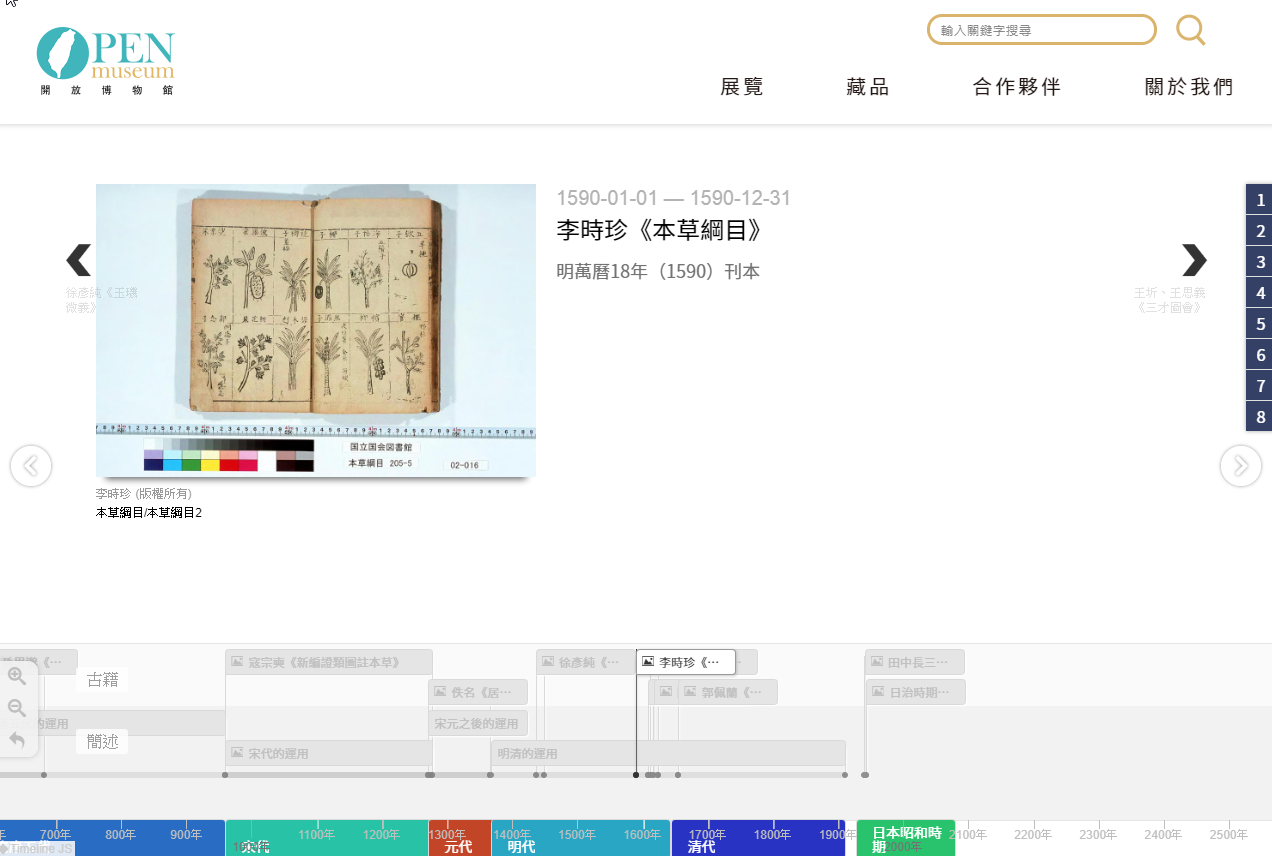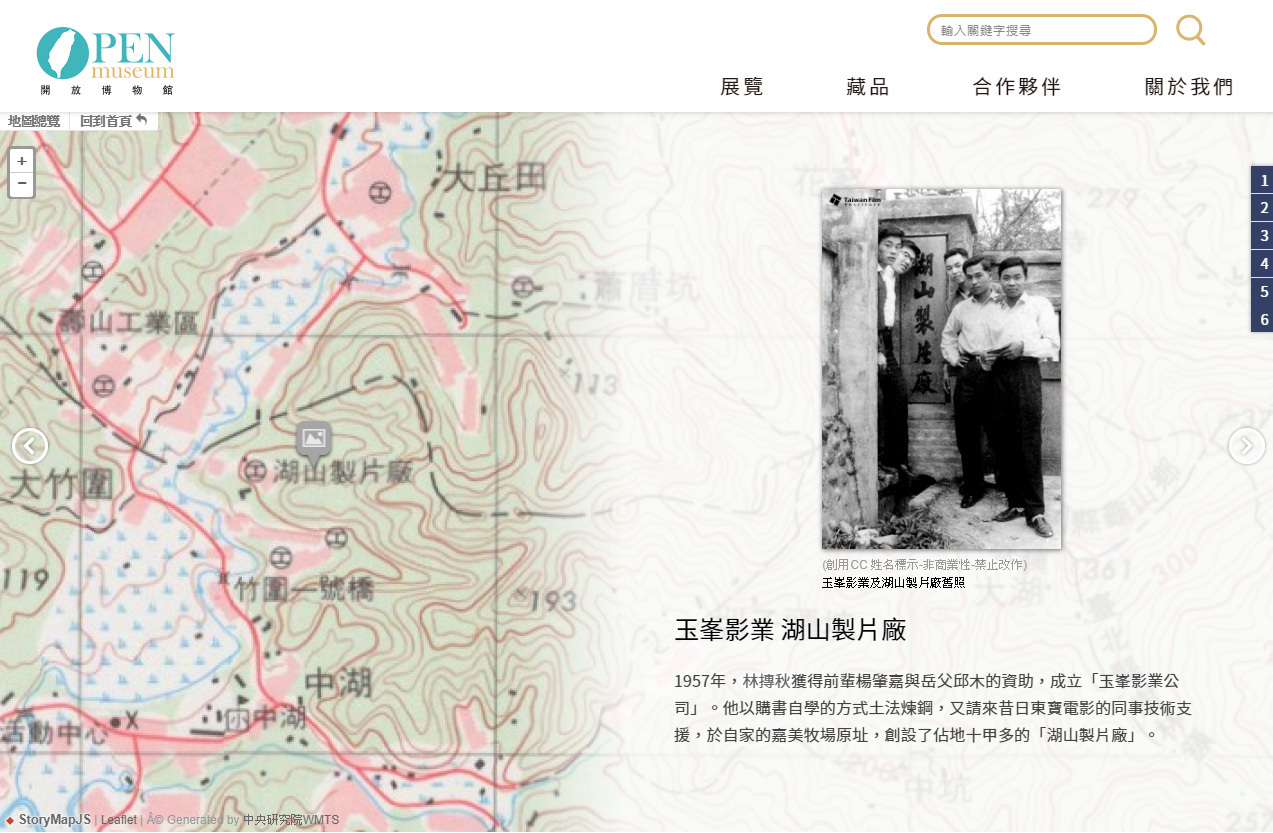
Open Museum instigates open access in favor of co-creation and the free and creative use of digital objects. Everyone is free to curate exhibits in sharing their collection or making use of other people's contribution.
Since its inception two years ago, Open Museum offers a free space where people can store, show, and make use of collections contributed by themselves and other users. It creates a network in which museums, archivists, and private collectors will have the opportunity to approach to all valuable collections on a single platform. They are provided with content package and a multimedia curatorial toolkit whereby individuals and organizations can freely curate online exhibits.
So far, Open Museum's partners include Cultural Affairs Department of Pingtung County Government, Taiwan Film Institute, Taiwan Public Television Service, The Museum of the Institute of History and Philology, and the Research Center of Biodiversity at Academia Sinica. The interest of Open Museum is all-embracing: it looks into ethnology, history, politics, cinema, photography, and biology. Its archives host Japanese-rule-era photographs, film posters and publications, manuscripts, edicts, contracts, paintings, and plant specimens. Among the objects are antiquities categorized as "national treasure" (23), "significant antiquities" (35), or "general antiquities" (50) by the Cultural Heritage Preservation Act. Painting-wise, it contains one of the watercolor pieces of Kimichiro Ishikawa, a Japanese watercolorist dubbed as the "father of fine arts in Taiwan." Titled as "Early Summer Road," the painting is among the rare ones that has been shown in the Taiwan Art Exhibition and remained in Taiwan.
In the future, Open Museum will be joined by Taiwan Music Institute, National Center for Traditional Arts; Taiwan Encyclopedia of Life, and datasets of Deng Yuxian, an eminent Taiwanese musician, as well as Yu Ru-chi, a notable Taiwanese documentary photographer.
With a cohort of partners who authorize the open access of online collections, Open Museum enables organizations and individuals to freely curate exhibits online. Endowed with spatial-temporal presentation tools, it facilitates the (re-)discovery of cultural significance of archived objects. The spatial and temporal models allow for vivid storytelling that can clarify the context of a given object. An abundance of maps collected by the Center for GIS, Academia Sinica from different ages enables the user to locate a given object on maps produced in various contexts. In so doing, the user may perceive specific spatial relationships illuminated by maps created during the Japanese colonization, American alliance during the Cold War or late twentieth century.


Red Lips and Black Teeth: A Special Exhibition on Betel Nut Culture captures references to betel nut in medical literature from different time periods in drawing on the timeline model. The model welcomes the curator’s attempt to assign different modes of periodization to the timeline.Lin Tuan-chiu locates the director's film studio on a 1989 map produced by the National Land Survey and Mapping Center for economic purposes.
So far, there are four approaches to creating exhibits: (1) From the physical to the digital, (2) Popularizing academic findings, (3) Object-oriented storytelling, and (4) Demonstrating the spatial-temporal models based on the body of objects. They can be exemplified as follows:
Red Lips and Black Teeth: A Special Exhibition on Betel Nut Culture migrates to the platform of Open Museum as a physical exhibit which previously took place in Taipei and Taichung in 2014. It shows how a conventional exhibit can appropriate a new habitat online.
The Great Paper Mulberry is a popular science exhibit that seeks to raise the general public's awareness of the relationship between the plant and the migration history of Austronesian peoples.
The First Golden Age of Taiwan Cinema: Taiwanese-Language Films features the films that capture the unique texture and context of Taiwanese language from 1955 to 1964.
Old Photos from Pingtung freely draws on the spatial-temporal models to revive the context surrounding the pictures.
Over 96 percent of the objects at Open Museum are labeled as creative commons. This means that users can not only make use of these objects on the platform but also elsewhere in complying the terms and conditions stipulated by the license. License release enhances the mobility and usability of digital archives such that people will have a freer access to learning from and appreciating cultural heritage.
Open Museum seeks to make itself a home for storytellers in need of a place and porte-parole. We appreciate what everyone has to offer and are happy to archive the trove for more people to discover and enjoy.